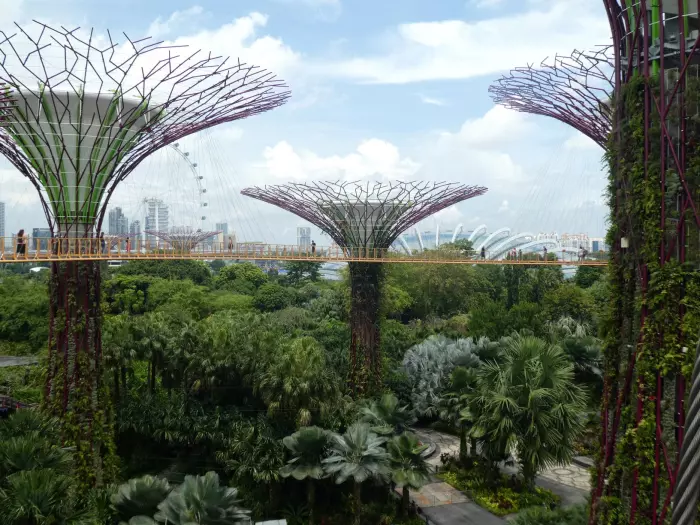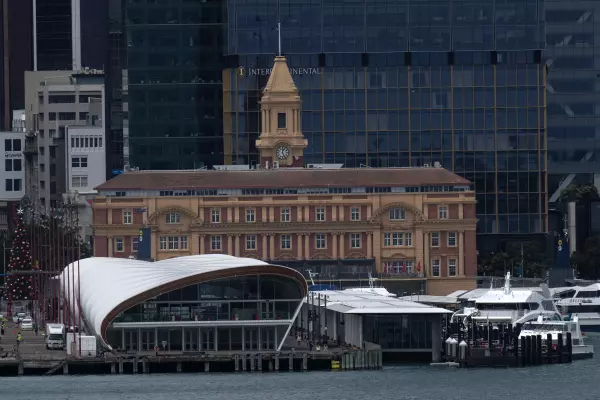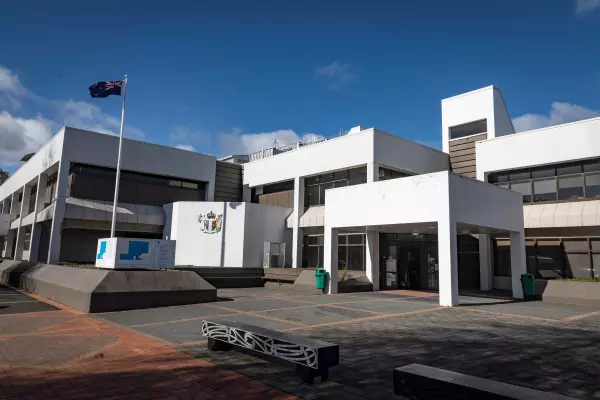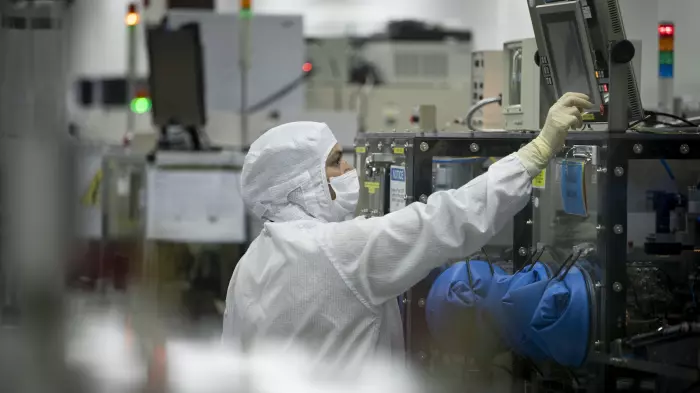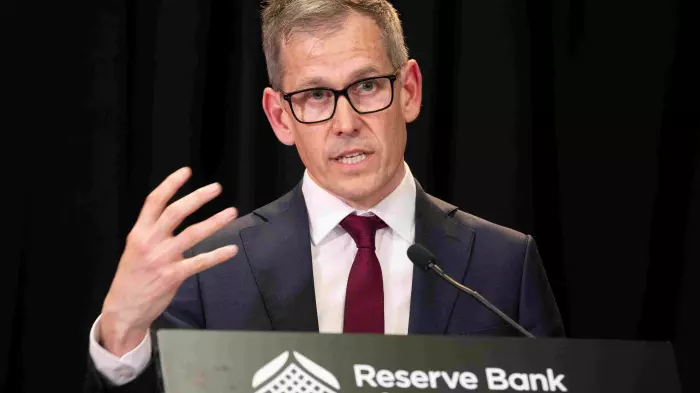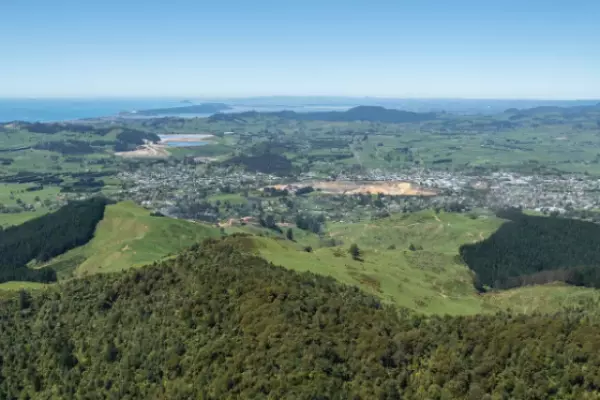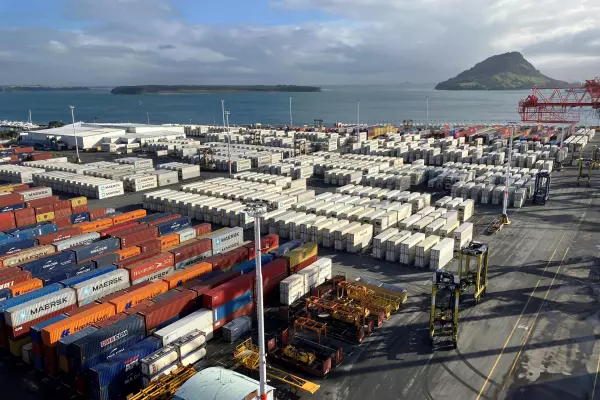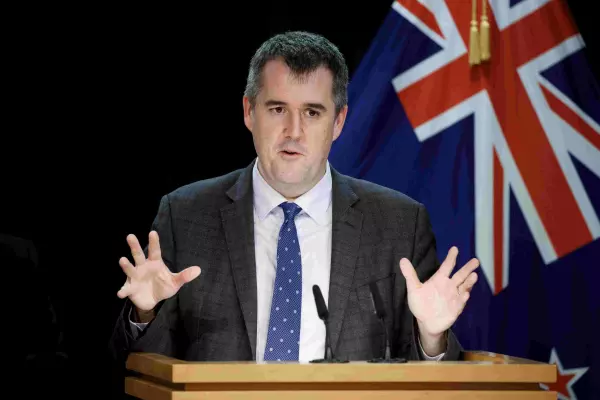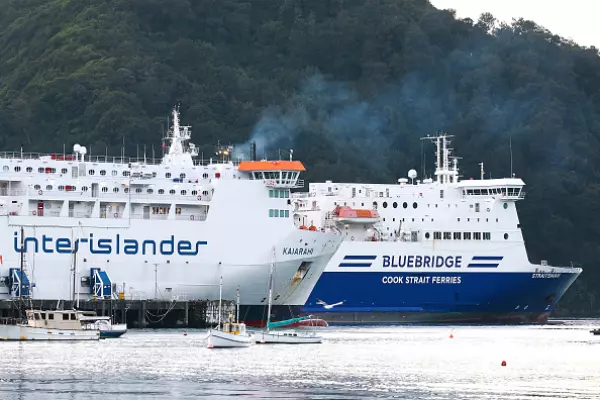In the first of a three-part series, Oliver Lewis looks at what New Zealand can learn from Singapore. The city-state is praised internationally for its infrastructure, particularly transport. How does it do it?
Cameras flash and people applaud as S. Iswaran, the Singapore transport minister, makes his way through the crowd gathered in the sleek new underground station. It’s an auspicious date: the 11th day of the 11th month of 2022, and Iswaran is here to open 11 stations on the Thomson East Coast Line (TEL), a multibillion-dollar rail link connecting communities in the north and east of the island with the central city.
“The rail network is the backbone of our public transport system,” Iswaran says, delivering his speech in front of a group of schoolchildren who, moments earlier, had been serenading the enthusiastic crowd.
“By building a more extensive MRT [mass rapid transit] system complemented by a pedestrian and cyclist-friendly network, we can create a more liveable city and a sustainable transport network for the future.”
In Singapore, a country not much larger than Lake Taupō, with a population bigger than NZ, efficient land use and transport are strategic priorities.

Singapore's transport minister, S. Iswaran, arrives at the opening of stage 3 of the TEL mass rapid transit line. (Image: BusinessDesk)
Since 1987, when the city-state opened its first mass rapid transit line, the rail network has expanded to more than 250 kilometres. The Land Transport Authority (LTA) expects that to grow nearly 50% to 360km over the coming decade with the completion of TEL and two other lines, meaning eight in 10 households will be within 10 minutes of a train station.
Already, about 70% of peak trips are made using public transport, walking or cycling. The government wants to grow that to 90% by 2040, according to a forward-looking plan. That isn’t to say people can’t drive, it’s just that in land-scarce Singapore, it doesn't make sense for cars to be the primary mode of transport.
As The Straits Times land transport journalist Christopher Tan explains: “We’ve always been car-lite,” he says, referring to a government policy to incentivise modes other than driving.
“If we focused on cars, then the entire city would eventually become a massive car park.”
As it is, roads take up some 12% of land space, close to the 14.5% occupied by housing.
To move people around more efficiently, the government funds MRT construction. As the biggest landowner, it also benefits from the land value uplift associated with this new infrastructure, Tan says. Fares, which are set by the Public Transport Council using a formula that takes into account inflation and network capacity, are subsidised at a cost of more than S$2 billion (NZ$2.38b) a year, across buses and trains, he adds.
Chewing gum and infrastructure
Since its independence from Britain and unification then separation from Malaysia in 1965, Singapore has become a global shipping and financial hub, boasting one of the busiest ports in the world.
Western critics sometimes deride the city-state for its strict social controls, encapsulated by measures like the chewing gum ban, and the political dominance of the People’s Action party (PAP), which has governed Singapore uninterrupted since independence. However, in terms of economic progress, it is an undisputed success.
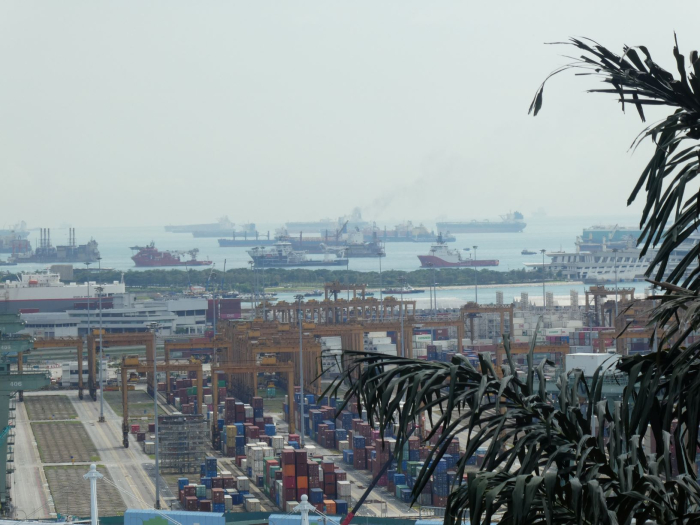
Singapore boasts one of the busiest ports in the world. (Image: BusinessDesk)
As Lee Kuan Yew, the former prime minister acclaimed as the founder of modern Singapore, noted in his memoirs From Third World to First, GDP grew 15-fold between 1965 and 1997. In 2021, per capita GDP was US$72,794 (NZ$116,153). In NZ, it was US$48,781.
Neighboured by the larger and more populous countries of Indonesia and Malaysia, Singapore has never been complacent about its national or economic security, giving it a kind of existential drive to compete.
“To survive,” Lee wrote, “we had to be better organised and more efficient and competitive than the rest of the region or there was no reason for our role as a nodal point between the advanced and the developing countries.”
This attitude extends to infrastructure.
The first MRT line that opened in 1987, the North-South Line, cost S$5 billion. The huge cost of the line, which at the time represented a sizable portion of GDP, triggered debate throughout the 1970s about whether or not Singapore should pursue rail or a less expensive bus option.
Like it did with Changi Airport, which is consistently rated one of the best and most efficient airports in the world, the government was prepared to invest. This remains the case. In 2022, the Ministry of Transport had a budgeted development spend of S$6.54b, including S$4.48b on rail projects.
As well as ensuring people can move seamlessly around the island, this willingness to invest in infrastructure also has a strategic element. It’s about positioning Singapore as an attractive hub for foreign companies, investment and talent.
“If you want to stay relevant, if you want to attract the right people, if you want to be a first-class city, you need to make sure your city is livable,” a local expert, who spoke on a background basis, says.
No one likes melted ice kachang
In a food-obsessed society like Singapore, with its bustling hawker centres and culinary riches, it’s understandable that advertisers would reach for food to help convey messages.
On a wall in one underground station is a large poster featuring a traditional dessert made with shaved ice, red bean, jelly and syrups.
“No one likes melted ice kachang,” it says.
“Likewise, we don’t want our glacial ice to melt,” it continues, before urging commuters to be cool and leave their car at home.
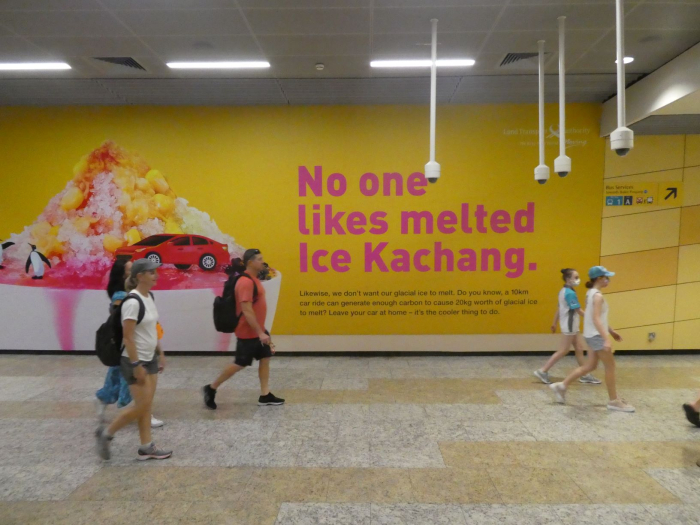
Advertising in a Singapore train station encouraging commuters to leave their cars at home. (Image: BusinessDesk)
In Singapore, that’s relatively easy to do. Authorities like LTA, with its ‘walk, cycle, ride’ vision, try to make it as easy as possible to use public transport or active modes (the pull factor) while pricing car use (the push factor).
“Singapore is just too small to accommodate more cars,” Terence Ng, a transport consultant and former bus network planner, says.
Through its vehicle quota system, which was introduced in 1990, the government sets growth rates to control the number of vehicles in use on the island. Since 2018, the car growth rate has been 0%.
“Somebody must give up a car before somebody else can get a new one,” Ng explains.
They do this by bidding in an online auction for a certificate of entitlement (COE), which allows a car to be used for 10 years. As of last November, the cost of a COE for larger cars was nearly S$115,000, making it cost-prohibitive for many and explaining the prevalence of luxury brands on the streets (why buy a Honda if the pre-purchase cost is already more than the value of the car?).
As well as the COE system, Singapore prices congestion. In the 1970s, it introduced what was called the area licensing scheme where drivers had to buy and display a paper licence to travel into the central city. In the late 1990s, that was replaced by electronic road pricing. The latter scheme charges drivers each time they pass under gantries via an onboard unit in their car. Pricing is set based on demand, so it’s more expensive during peak hours.
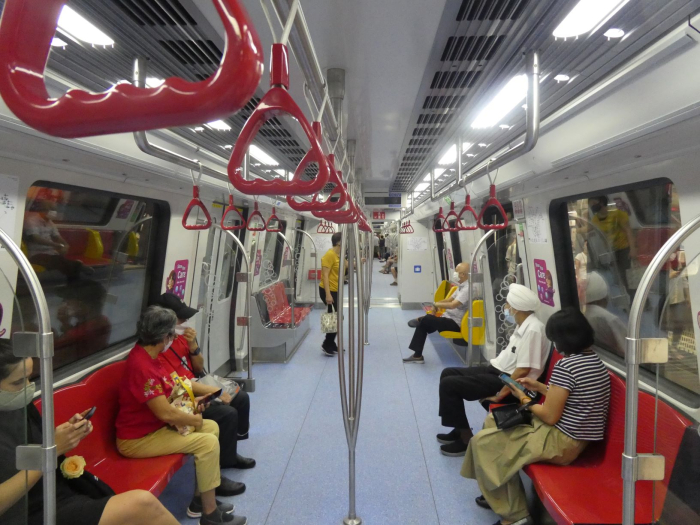
Commuters ride for free on opening day of TEL stage three. (Image: BusinessDesk)
LTA and others like the Housing Development Board are also repurposing space away from cars or planning new residential areas, like Tengah in the west of the island, with fewer roads or roads run underground to free up space on the surface for residents.
And when major new roading projects are progressed, Ng says they’re now intended to support public transport, too. The massive North-South Corridor, for example, was initially conceived as an expressway but has since been reconfigured as a transit priority corridor, due for completion later this decade, with bus lanes and cycleways.
Biking the garden city
Branded as a City in a Garden, Singapore now aims to go further and become a City in Nature, according to its ambitious 2030 green plan. The plan intends for every household to be within 10 minutes of a park and that, by 2035, the city-state will have added 1000 hectares of new green space.
That’s good news for cyclists, given the majority of existing shared walking and cycling routes run through parks.
Despite its hot and humid climate, Singapore has major growth aspirations for cycling, aiming to more than double the size of its existing network of paths, from 500km to 1300km, by 2030.
Kenneth Wong, the deputy group director of the active mobility group at LTA, says cycling might not be viable for all end-to-end trips, but it can help solve the first mile/last mile problem of how commuters get to MRT or bus stations.
He admits the 2030 goal is ambitious but says it will happen.
“We were set back slightly because of covid, but we will catch up because that’s what we committed to do.”
Cycling paths in Singapore are typically off-road and, as Wong explains, they’re configured to link up key amenities, like shopping centres and stations.
“There are more than 20 Housing Development Board towns in Singapore, so our goal is that every town will be covered,” he says.
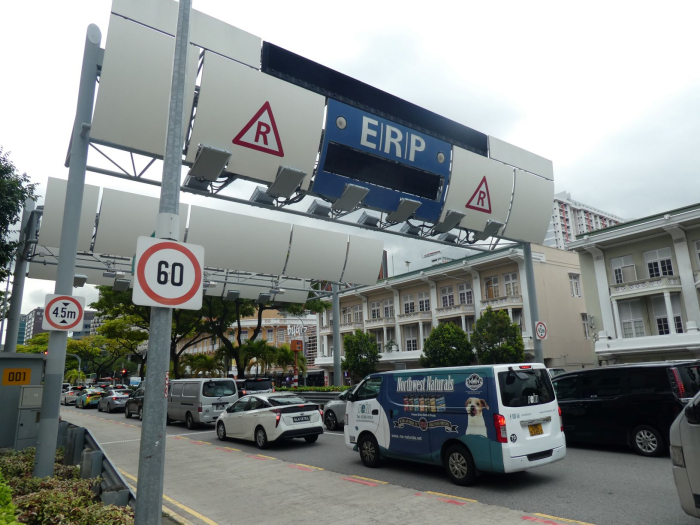
One of the electronic road pricing gantries dotted around the city-state to moderate congestion. (Image: BusinessDesk)
To incentivise the uptake of active modes, LTA offers an active commute grant of up to S$80,000 to developers to provide end-of-trip facilities such as lockers, bike parking and showers.
It also wants to make it easier for people to walk to stations, with plans to add another 150km of covered linkways – intended to shelter commuters from the elements – by 2040.
Wong speaks with BusinessDesk in the Singapore Mobility Gallery run by LTA, an educational space full of information boards about the "car-lite" strategy and other priorities. It also features simulators where users can experience being a bus driver, or "bus captain" in LTA parlance, as well as other transport roles.
Caring commuter culture
As well as physical infrastructure, Singapore attempts to foster what it calls a caring commuter culture and drive interest in public transport through education campaigns, including posters celebrating bus and train workers, and experiences like the bus captain simulator.
The caringcommuters.gov.sg website includes stories of public transport heroes awarded for their good deeds, including a 62-year-old man who helped stop a molester at a train station. As well as highlighting commendable commuters, Singapore has also developed what it calls "Heart Zones" in some stations where, if people require assistance, they can wait knowing other commuters will come to their assistance.
With an average of 5.2 million bus and train rides a day in 2021, how well the public transport system functions affects the day-to-day life of most Singaporeans, making it a deeply felt and cared about issue.
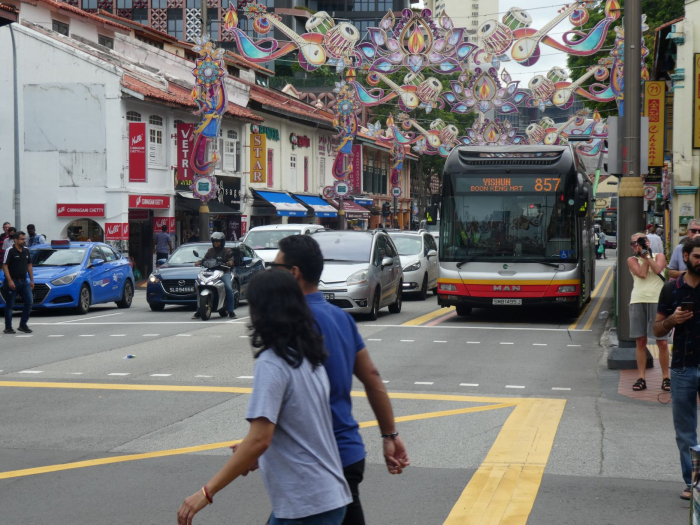
In Singapore, buses and trains work together as part of an integrated transport network. (Image: BusinessDesk)
As Glenn Lim, the communications and customer experience director at Tower Transit, a bus operator, says, with reliable infrastructure, Singaporeans have come to expect a certain level of user experience and, if things go wrong, they love to complain.
Tower, which operates two of 14 bus packages for LTA, has tried to reverse this trope by running a compliment incentive scheme where drivers earn cash based on the number of compliments they receive each month.
Drivers can also earn an allowance for safe driving. As Winston Toh, the managing director for Tower and a former army division commander, explains, buses are fitted with a telematic system that alerts drivers to issues like heavy braking or hard cornering. More than 20 instances in a month and the driver misses out on the S$130 allowance.
Under a new bus operating model introduced in 2016, the government owns the buses and the station assets, while companies like Tower compete to win commissions from LTA, which sets KPIs and dispenses penalties and incentive payments around things like on-time arrivals. With its oversight of travel data, LTA can also tweak network planning, inserting an extra bus, say, if a route is overloaded.
Buses and trains make up an integrated system in Singapore. Buses feed passengers to stops outside MRT stations; once they’re on the train, people transfer easily between stations and lines knowing the next service will only be a short wait. It’s cohesive, easy to navigate and, as Toh notes, affordable.
“Because our public transport is so readily available,” he says, “you don’t need to drive.”
Oliver Lewis travelled to Singapore with funding from the Asia New Zealand Foundation.


